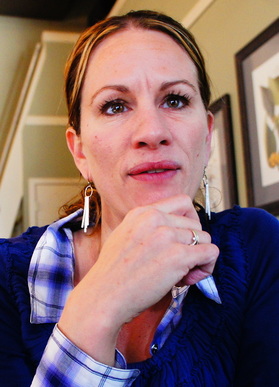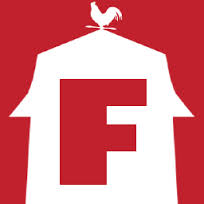 Janelle VanderGriend grew up close to the Canadian border, in Lynden, where the Dutch Village Inn on Front Street features a real windmill. Her family, like many others, had a berry farm in Whatcom County's dairy country. She worked in restaurants (for Schwartz Brothers), went to culinary school (Art Institutes), earned an MBA (from Seattle Pacific) and put it to use in the food industry (Pasta & Co.). Then she and her husband, James Maiocco, took off for Europe, and in the course of a year in Italy came to appreciate the "clean, humble food" they found in Florence.
Janelle VanderGriend grew up close to the Canadian border, in Lynden, where the Dutch Village Inn on Front Street features a real windmill. Her family, like many others, had a berry farm in Whatcom County's dairy country. She worked in restaurants (for Schwartz Brothers), went to culinary school (Art Institutes), earned an MBA (from Seattle Pacific) and put it to use in the food industry (Pasta & Co.). Then she and her husband, James Maiocco, took off for Europe, and in the course of a year in Italy came to appreciate the "clean, humble food" they found in Florence.
Janelle returned to Seattle determined to recreate that connection. She joined direct buying clubs and bulk buying groups, but soon realized that she was seeing only the "demand" side of the business: consumers who wanted fresh food grown without pesticides; on the other were farmers, bakers, ranchers, and fishers with products to sell.
Gee, you might ask, isn't that what markets are all about? A place for buyers and sellers to meet? Isn't that what the farmers markets in two dozen Seattle neighborhoods are all about, organic carrots for yuppie householders? Not to mention the grand-daddy Pike Place Market, or the "fresh, local" aisles of a few enlightened supermarkets.
All well and good, but it's worth noting that there aren't enough farmers to go around. Too many markets! Every neighborhood wants one! And a farmer can only be in one place at a time. So if there's more than one market on a given day, the farmer has to pay an employee to staff the booth (not to mention pay a percentage of the day's take to the market master), which kind of takes the edge off the whole exercise.
 But what if you didn't have to depend on physical markets, on parking lots and canopies, on market masters and health inspectors? What if you could use (wait for it) this thing everyone uses every day to watch cat videos? The internet, right! C'mon, this isn't brain surgery, it's nothing less than Amazon.com's business model. No need for book stores. In fact, Amazon did try shipping groceries (as if they were books), without great success. But Janelle Maiocco's motive was different: connecting farmers directly with shoppers.
But what if you didn't have to depend on physical markets, on parking lots and canopies, on market masters and health inspectors? What if you could use (wait for it) this thing everyone uses every day to watch cat videos? The internet, right! C'mon, this isn't brain surgery, it's nothing less than Amazon.com's business model. No need for book stores. In fact, Amazon did try shipping groceries (as if they were books), without great success. But Janelle Maiocco's motive was different: connecting farmers directly with shoppers.
Farmers have a tough enough time dealing with agriculture; even if they weren't already working 18-hour days in their barns and fields, they're not particularly skilled at business development. So she created a website to facilitate their outreach to consumers. She named it Farmstr.com, and today it connects about 80 producers (farms, ranches, dairies) with about 500 buyers. The producers list whatever they want to sell (from a dozen eggs or a bucket of organic honey to half a hog); the items are added to the buyer's cart, and click! Just look at what you can buy: goat bones, kidney and heart; a share of pasture-raised Red Angus beef; grass-fed alpaca as braising steaks, or hamburger, milk, cream, eggs.
The farmers are located as close to Seattle as Auburn and Monroe, as far afield as central Washington and eastern Oregon. Pickup points vary; that's the bottleneck, obviously, so expansion of the Farmstr.com concept is going to depend on adding more "partner drop sites," as they're known. Several are close to downtown Seattle. But there's a feel-good element involved as well: buyers meet farmers at their drop-sites, and often sell additional items. "Farmstr means better margins for local producers and lower cost for local consumers. It's like the airbnb for local food," Janelle Maiocco says. "It's a big deal for us to see small farmers succeed."
UPDATE, May 29th: According to Geekwire, Farmstr has just received $1.3 million in funding to expand its services.
Leave a comment